When Juno came to live with us last June, he was a round, lumbering cat who had trouble getting up on the counter. He panted after just a few minutes of playing and seemed to struggle with cleaning his rear end, given the fact that he kept developing mats on his bum that we’d have to untangle with a brush.
For those of you who don’t know the story, Juno used to live at my mom’s house. He got along well with the other animals who lived there over the years: Buddy (my childhood dog), Debbie (my sister’s cat), Sammy (my mom and her husband’s elderly cat), and Zeke (their dog). Juno lived a pretty active life chattering at birds from the sunroom, wandering around in the backyard, and getting into trouble trying to climb up the walls in the basement.
But after Buddy and Zeke died and Debbie moved away, my mom and her husband got a new dog, Simon, who did NOT get along with Juno or Sammy. Simon would hunt down the cats and try to play with them, but they weren’t having it. Juno was especially scared of the dog, and spent most of his time confined to a single upstairs bedroom as his refuge. Other times, he stuck close to Sammy, who acted as his bodyguard.
A few months after Simon came into her life, my mom sold the house and planned to move. We decided as a family that the best course of action for Juno was for him to come live with Ryan and I. My sisters and I couldn’t stand the alternative: he’d have to adjust to an entirely new environment AND keep avoiding the dog all the time.
At our place, Juno would be a spoiled only-cat and get an entire apartment all to himself. There would almost always be someone home to spend time with him, and he’d even have a catio where he could watch the birds and spy on the neighbors. And best of all: there’d be no dogs. Clearly this was the better option.
Juno is a naturally big boned guy, but after many stressful months of dog-induced seclusion, he seemed fatter than I remembered. But the thing that worried me most was that his physical fitness seemed to deteriorate from all his time spent hiding.
One morning, shortly after Juno moved in, he tore a hole in our sheets when he slipped trying to get on the bed. He was clumsy and unbalanced — not like the cat I knew to gracefully tiptoe over flower pots on the windowsill in my mom’s sunroom.
Juno wasn’t due for a vet visit until the fall, but we ended up taking him in early because he got an eye infection in August. When the vet weighed him, he was 18 pounds. The average cat is about 10 pounds. He also got a 9 out of 9 on the body scale, and the vet marked him as “obese.”
I know Juno will never be a skinny cat. But his weight, coupled with his physical fitness, worried Ryan and I.
Heavier cats tends to be more prone to chronic conditions like diabetes — we actually know someone whose large cat has diabetes and has to have regular insulin injections. It wouldn’t be the end of the world if Juno developed diabetes himself, but we hope to avoid it if we can. And losing weight is one way to bring that risk down.
I won’t bore you with too many details of Juno’s diet, since I doubt you care about how many cups of lite cat food he eats every day or how many treats we ration for him. But like any good weight loss plan, it has three main tenants: portion control, reasonable calorie limits, and increased exercise.
It’s been about seven months since we started trying to get Juno to slim down. Finally, we’re starting to notice some physical changes.
His belly is less round and we can actually see the outline of his hips now. He no longer gets mats on his bum that he can’t reach, and he’s a lot more nimble when climbing around on counters and windowsills. And while Juno will always gladly accept another snack (he’s EXTREMELY food-motivated), we’ve gotten to a point where he doesn’t constantly beg for extra kibble because he’s hungry.
A few weeks ago, Ryan and I decided to weigh him for the first time since our vet visit last year. I stepped on the scale, took my weight, got off, and then grabbed Juno and stepped back on the scale. We subtracted my weight from my weight + Juno to get his weight.
And guess what? He’s lost two whole pounds. That’s a lot for a cat! 16 pounds isn’t bad for a big guy, though I wonder if he’ll lose any more once it’s summer and he spends more time wandering around his catio. The good news too is that I can feel his ribs more easily than before: that’s one of the things the vet checks for when doing a body score assessment. So he’s definitely got less meat on those bones than before.
But you know what? He’s still a big cat. I call him my gato gordo, and he always will be even if he’s on a diet. The thing that brings me joy is that he seems a lot happier now, being able to live in a place where he can wander freely and be a near-constant pest. That matters much more than the number on the scale. But if we can help him maintain a healthy weight, that’s great, too.
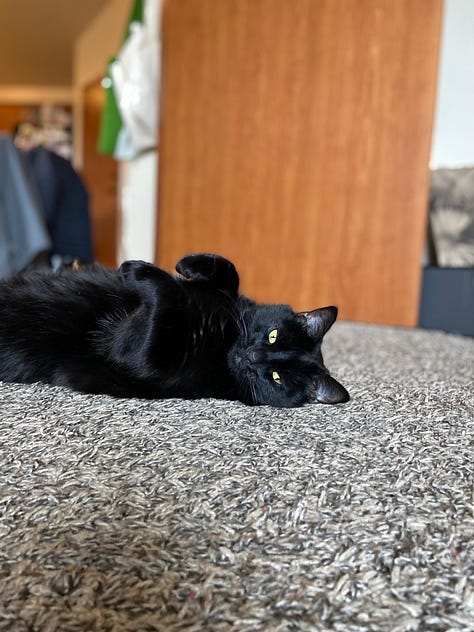
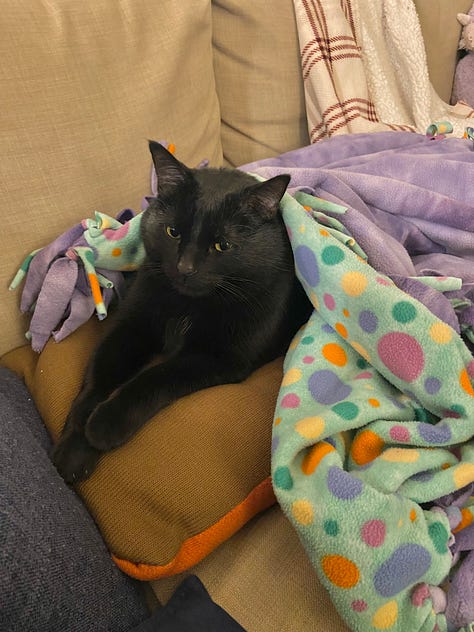
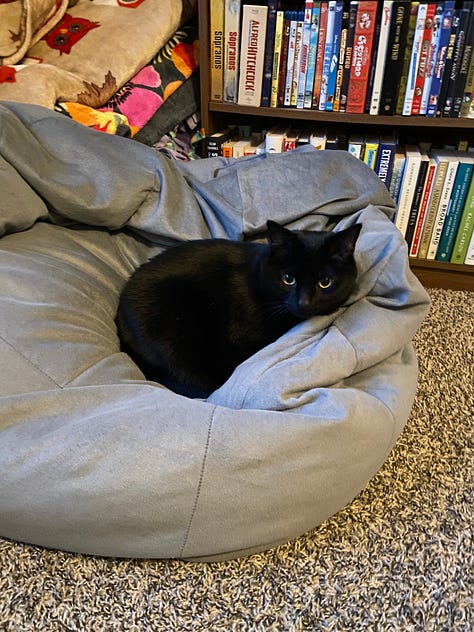
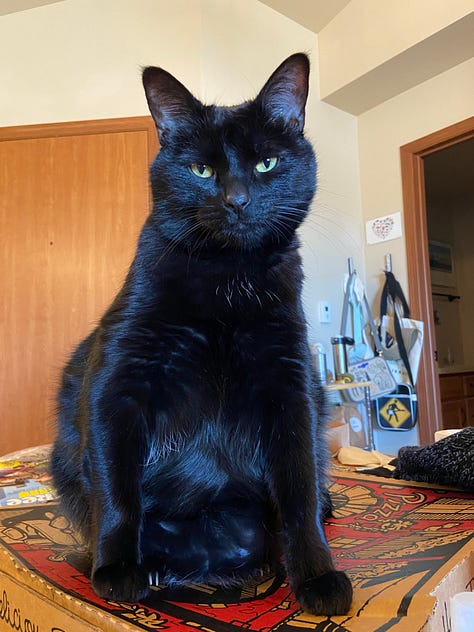
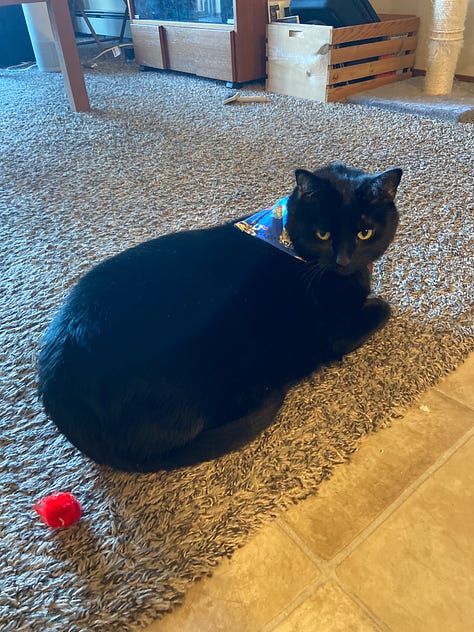
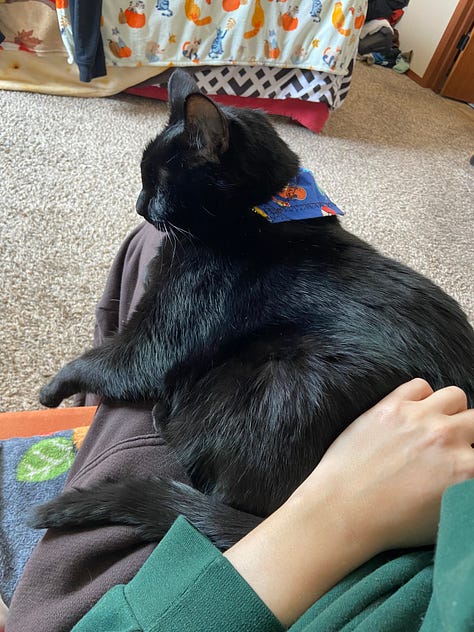
This newsletter wouldn’t be possible without all of my readers, including YOU!
If this post brightened your day, taught you something new, or made you think, consider supporting my newsletter financially through a one-off or monthly donation. Any amount means the world!
Writing is my full-time job and your financial support helps me dedicate time every week to write new essays and develop writing classes. Help keep these things going by dropping a few bucks in my tip jar today.
And while you’re at it, give a round of applause for my 2025 supporters:
Dennis T.
Emma H.
KRW
Grandma Gin Gin
Maddie B.
Tara Y.
👏👏👏



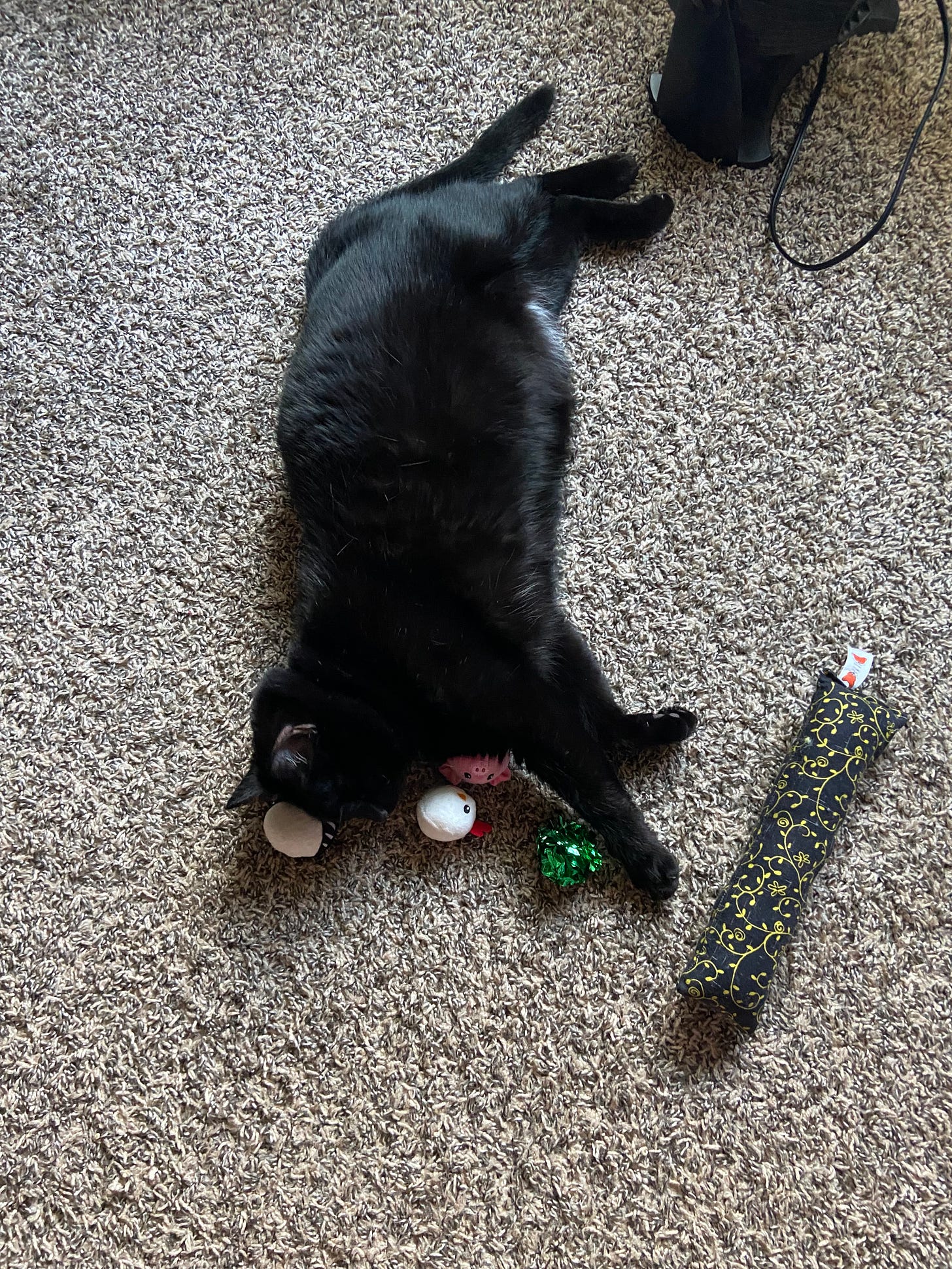


I enjoyed reading this saga about how you got Juno! This tale reminds me of my boyfriend’s cat, Riker, who’s on a diet and always begging for food.